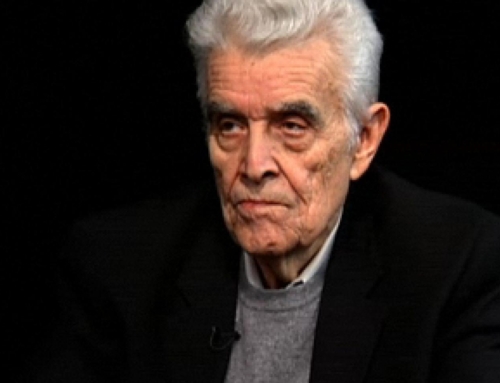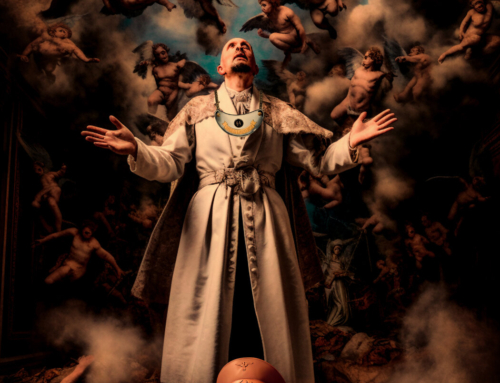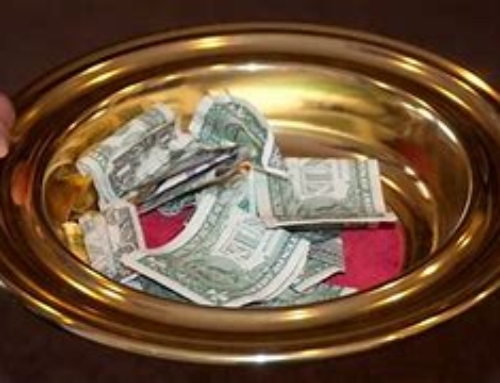Fr Z has written here about the true clericalism in the church.
He points out that traditional Catholics are often accused of clericalism because the clergy dress in their cassocks, like wearing birettas and insist on the distinction between the clergy and laity because they are opposed to extraordinary ministers of Holy Communion and lay leadership.
But Fr Z. claims that the liberals in the church are just as driven by clericalism if not more. I agree.
When I travel around the USA visiting parishes for missions or speaking at a conference I’ll often come across the typical American suburban Catholic church built in the 70s and 80s–you know the sort of concrete monstrosity that looks like an giant ice cream cone that has fallen face down…
When I ask the people how this futuristic cross between a space ship and a parking garage came to be they will tell how “Fr Uptodate decreed that it would be like this. He designed it. He controlled the process down to every detail and the only part the people had to play was they had to pay for it.
Or they will tell how the Diocesan Liturgical Committee won’t let them build a traditionally styled church. It’s their money and their parish, but they can’t spend it building the kind of church they want.
The cruel irony of this Stalin-esque liberal clericalism is that the liberal bullies smiled sweetly and said this kind of architecture was “the church of the people”
Baloney.
The same kind of clericalist bullying took place not only in the realm of architecture, but also in theology, spiritual formation, catechesis, liturgy and every other aspect of church life.
I first experienced it in the Anglican Church, but I’m not surprised that it is rife in the Catholic Church too.
It was not only in parishes, but it was also present in seminaries, religious houses, Catholic colleges, chanceries and schools across the world. The modernist ideologues knew what was best for you and your job was to pray, pay and obey, but especially pay and obey.
While this is true, I’d like to add to Fr Z’s rant by pointing out another form of clericalism which is strangling the church today.
Remember “clericalism” comes from the word “cleric” or “clerk”. A priest was once called “a clerk in Holy Orders”. This is because when only the priests and monks were literate they held most of the office jobs.
So the form of clericalism strangling the church today is the clericalism of bureaucracy. Rather than serving the people of God the diocesan officials are the clerks (but not in Holy Orders) who quash spiritual initiatives with paperwork, forms, codes of conduct, assessment plans, annual reports, financial compliance reports, regulations, regulations, regulations.
Try starting up a local faith initiative that needs diocesan approval. You will have the clericalism of the diocese all over you pointing out a hundred and one reasons why this won’t work, your vision will fail and you will not get approval. You will have to go through insurance company procedures, financial projections, feasibility studies and more.
They will say, “This is to protect our children” or “this is to protect you.”
Huh uh.
This is to protect the insurance companies. This is to protect the “assets” of the diocese. This is to protect the people at the top.
This clericalism too is deadly, and it is a particularly noxious form of clericalism because it is not obvious. Nobody is wearing a cassock and strutting about in a brocade fiddleback chasuble or processing in a cope and canopy.
Instead these clerics control and dominate with their smart suits, their high end salaries, their corporate lifestyle, their laptops, their conference calls and their long vacations
And all on the nickel you put in the collection plate.
This kind of clericalism makes the simple traditional priest who wears a cassock and cope and tries to serve his people look increasingly like the Cure d’Ars.
If you appreciate this blog being free and free of all third party advertising please consider becoming a Donor Subscriber. To learn more go here.







Clericalism is a pejorative word. Too much control that, at times, stifles the exercise of Faith outside of Mass and, at times, hides serious sin and crime committed by those in some Church authority. I’ll leave the clerical sin and crime to others.
The expanded exercise of Faith by some well meaning group does however require a certain degree of clerical oversight for two reasons, IMO. First, well begun is half done. You gotta make sure the airplane is well built and the flight crew well trained before you try to fly it. Otherwise, “Oops” could have real meaning. It is prudent to avoid having to deal with a program that, although well meant, went astray because the leaders were not as well trained in presenting the Faith as they should be. Humans often have a tendency to want to put their personal stamp on how to perceive things and end up teaching confusion. We have a number of examples of priests and higher ups that seem to be teaching confusion and thus some clerical oversight is required but seems to be rather slow in coming. So, prudent planning and oversight is wise when lay people demand a platform.
The second reason is that we live in a secular world. Given the slightest reason, unknown people can sue the deep pockets. So, when a group is allowed to operate on Church property, in the name of the Church, then the Church has to have some standards to reduce the risk of very expensive litigation.
The question of when does prudent clerical oversight become too much and qualifies to be called clericalism is depends on proper knowledge of the particular facts and assessment by competent authority not committed to clericalism.
I think Jesus had to deal with a lot of clericalism. As we go forward with the new evangelization, there’ll be those in our church doing everything to make it difficult to accomplish. Persecution from our own isn’t a new idea either.